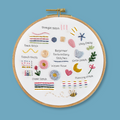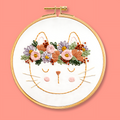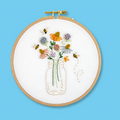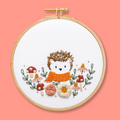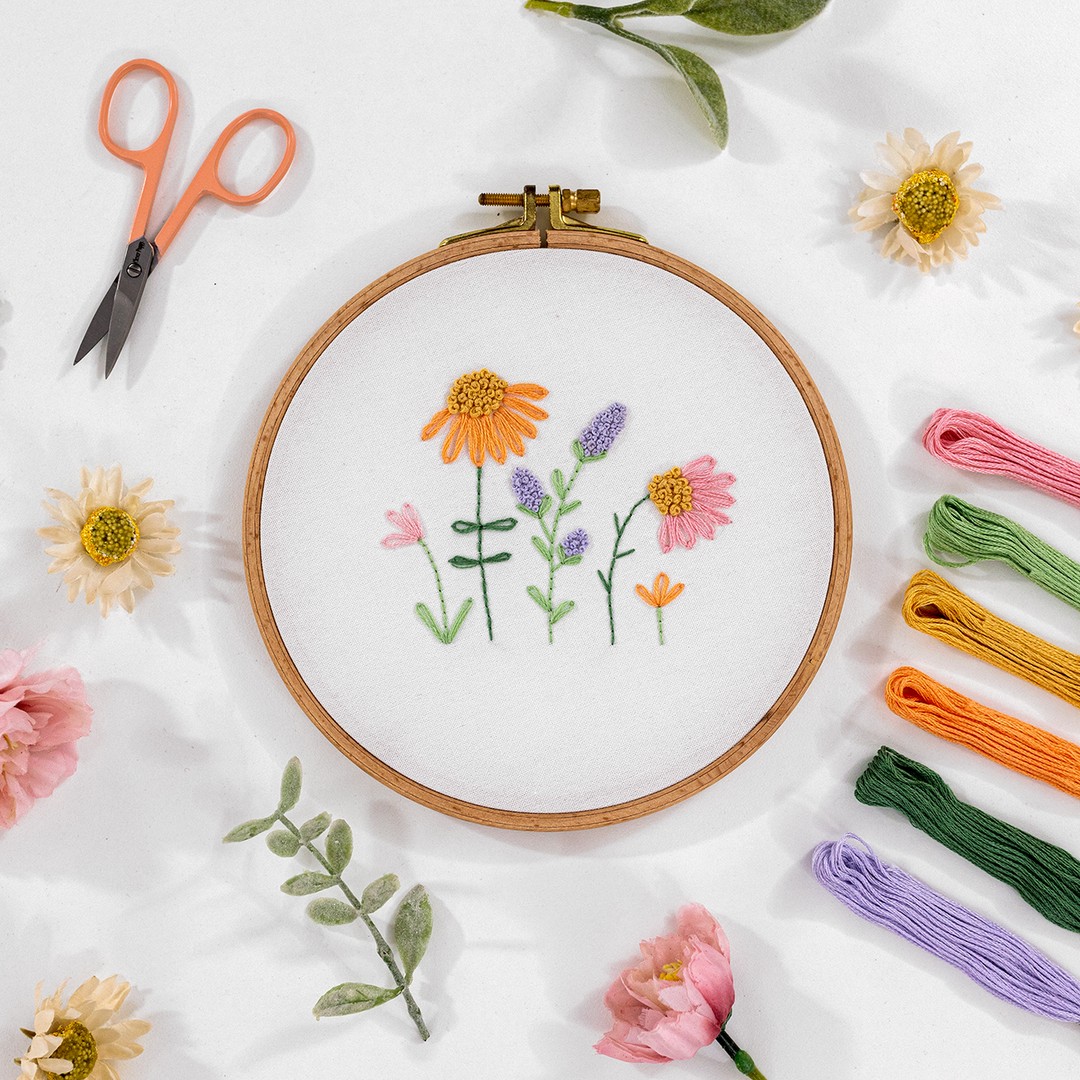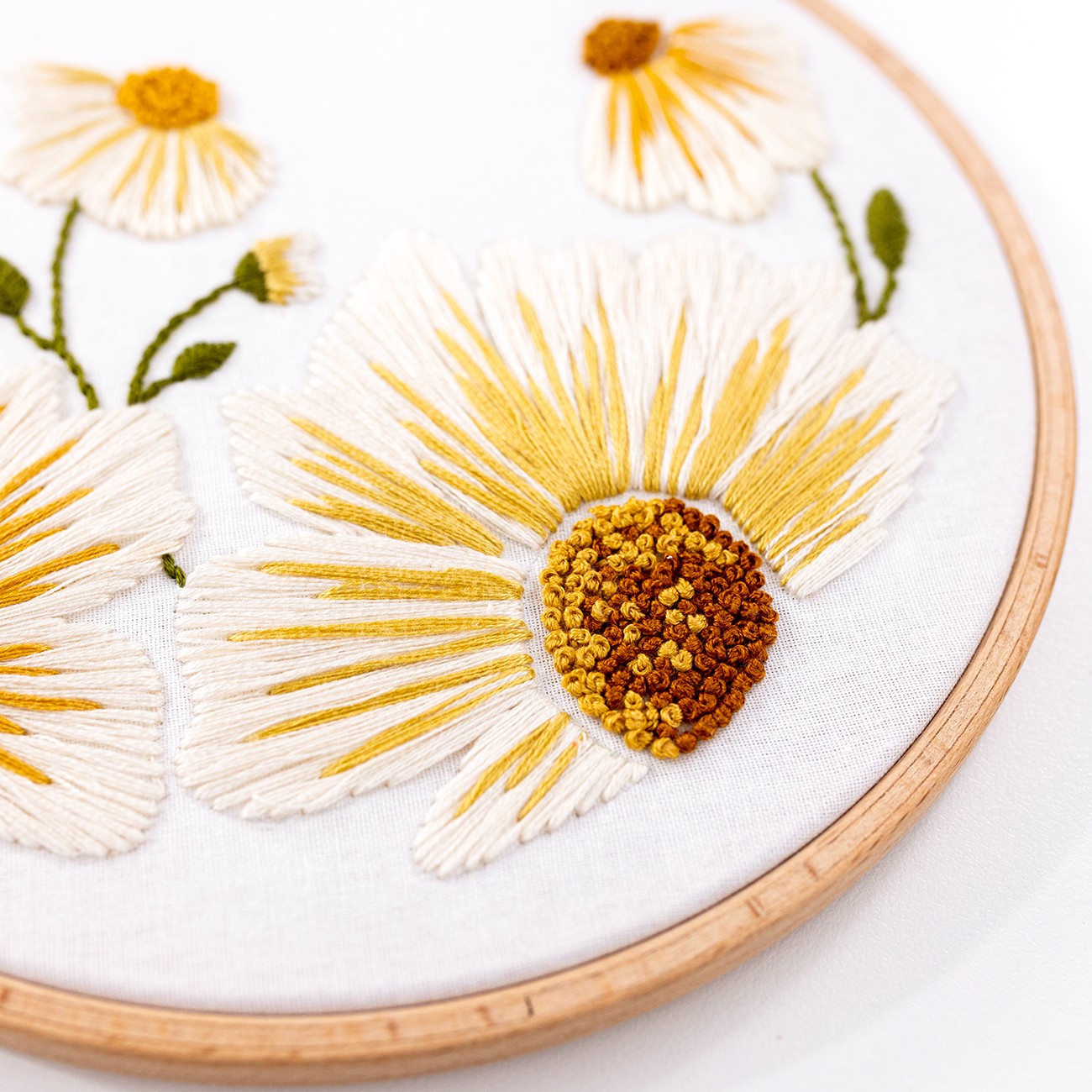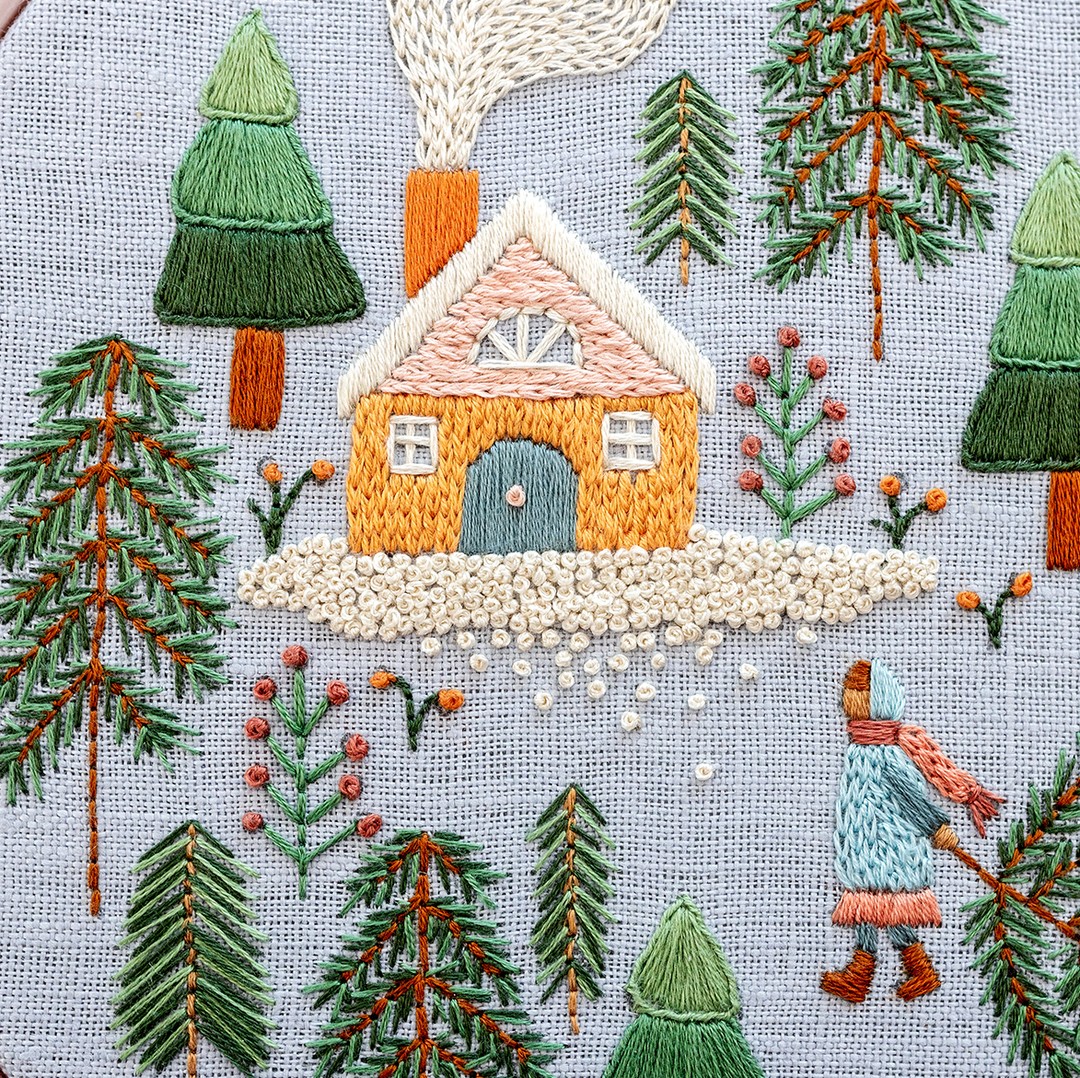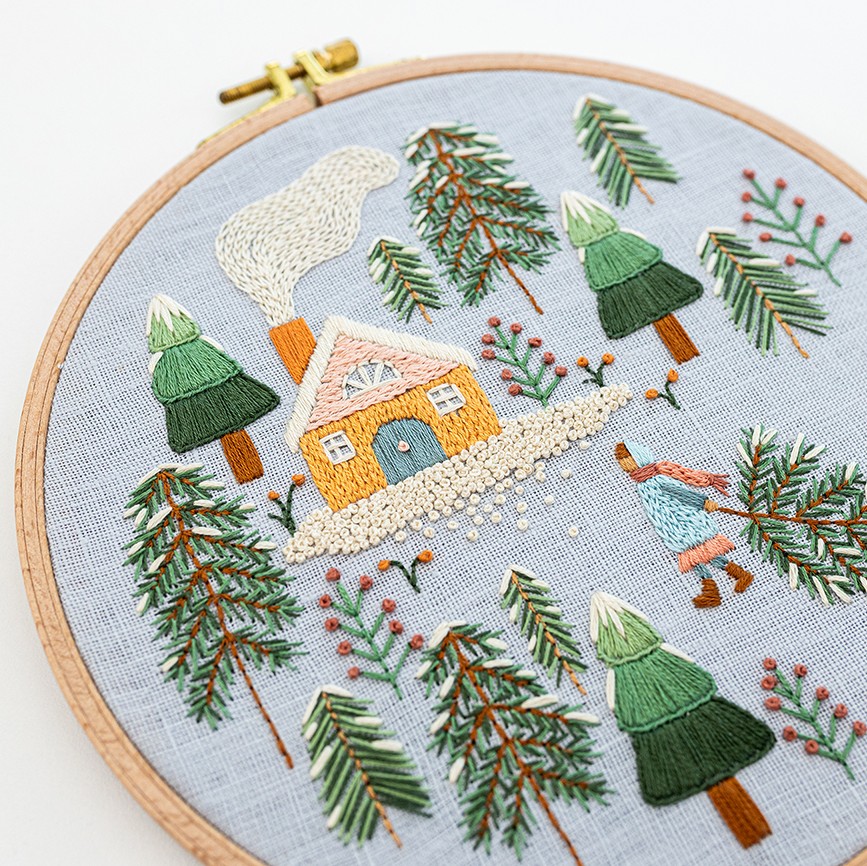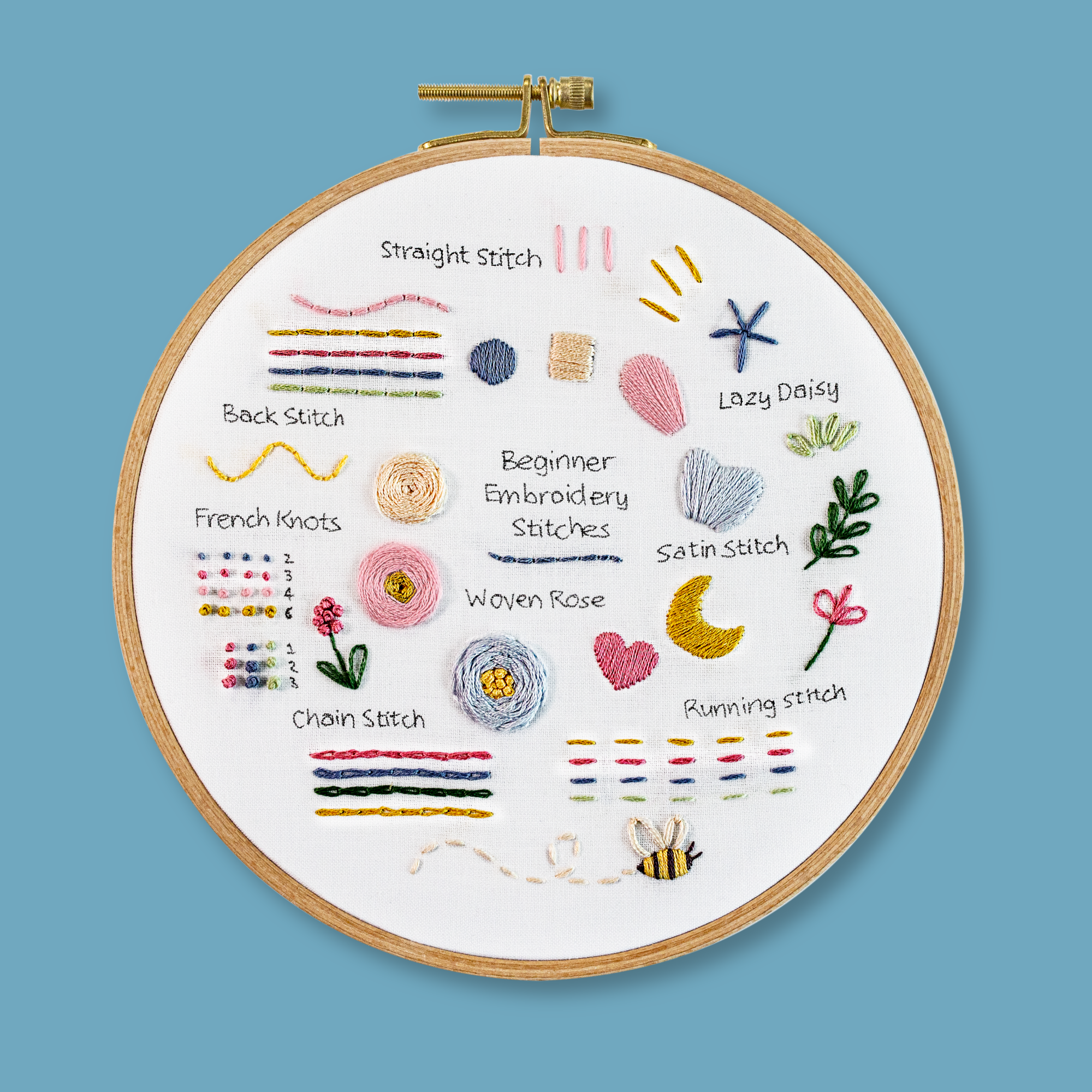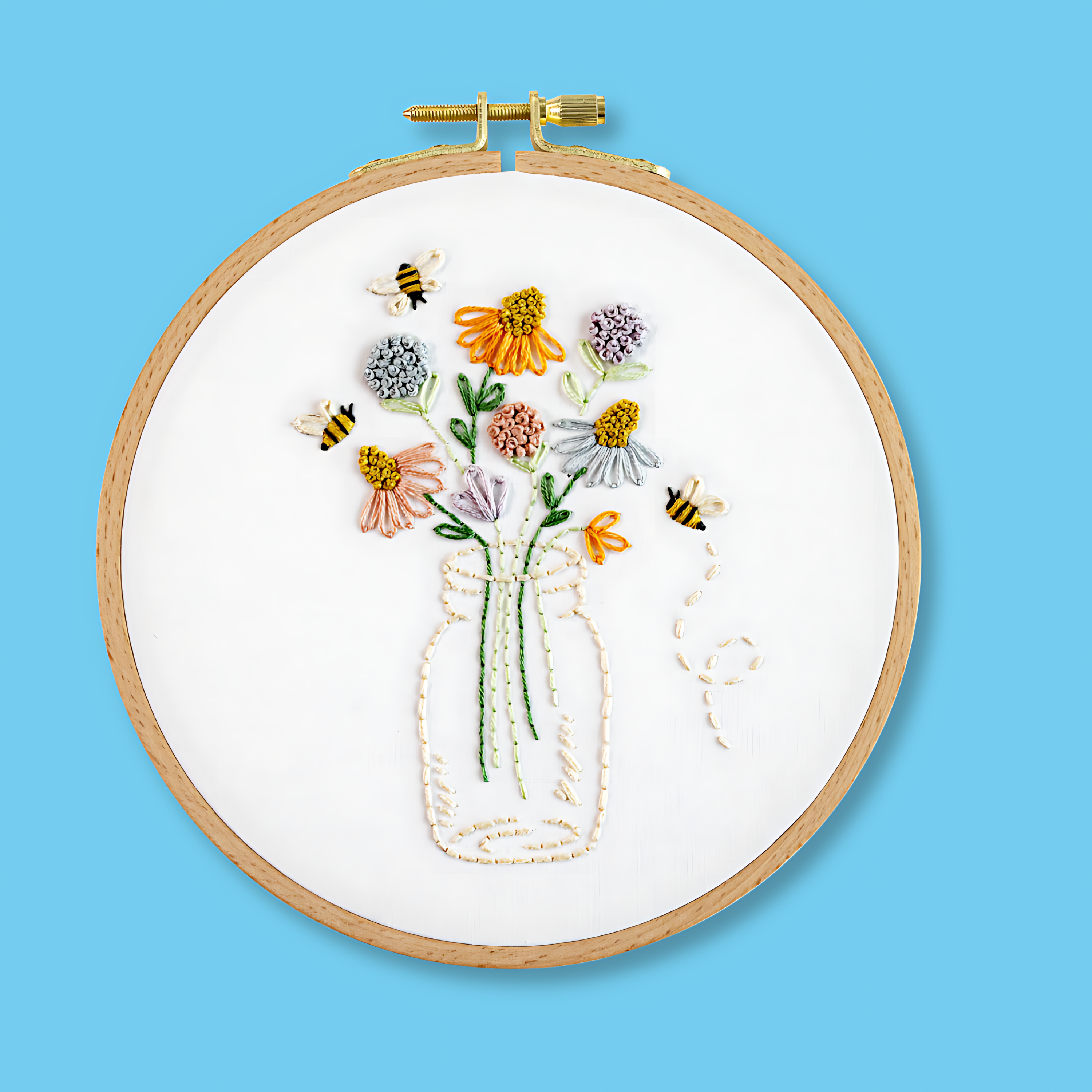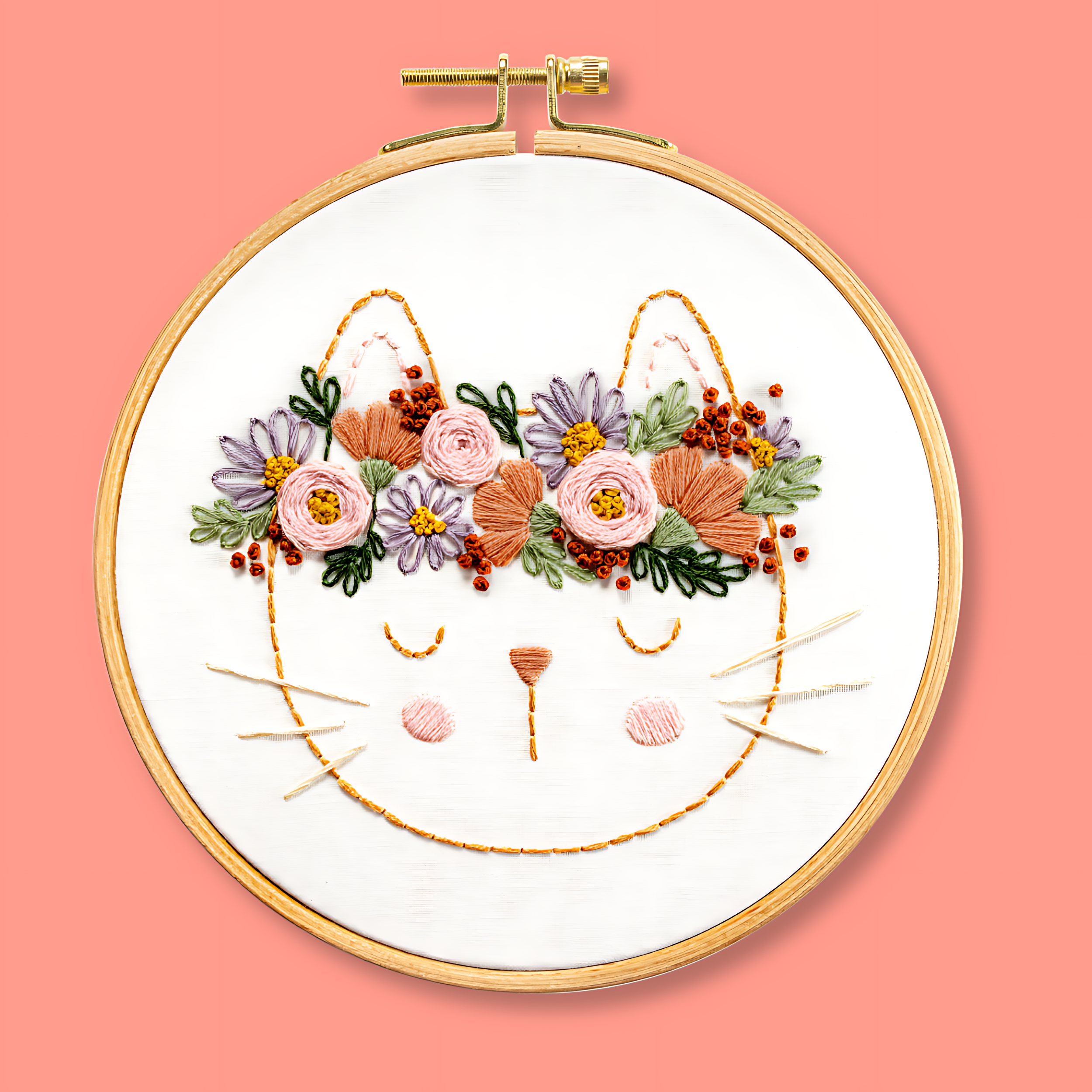French Knots - Learn This Modern Embroidery Technique
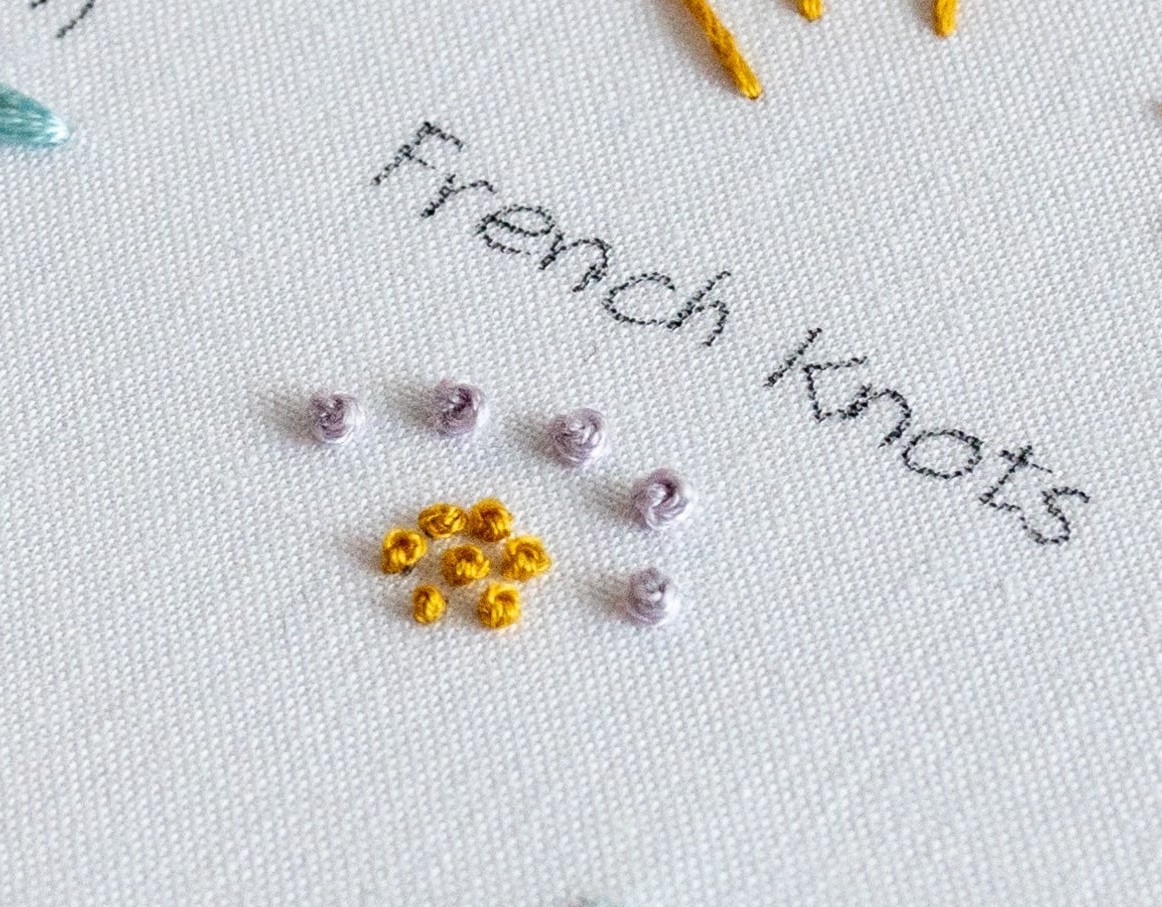
Introduction
A French Knot is a small, textured embroidery knot that adds some charming raised detail to your fabric. It's created by wrapping the thread around the needle and poking it back down close to where it came up. This knot is a must-have for so many embroidery designs! Learning this technique might feel a bit tricky as a beginner, but just trust me and follow this exact method. Keep practising, don’t give up, and before you know it you’ll be making awesome progress and creating your own French Knots!
Let’s try it out:
Step 1.
Start by bringing your needle up from the back of the fabric to the front, at the point where you want to place your first knot. Gently pull the working thread through to the front, so that your knot secures the thread at the back.
Step 2.
Hold your needle parallel with the fabric, directly below where the thread comes out from the fabric. I’m right handed, so the point is facing left. Your other hand (the one not holding the needle) will play a big role when it comes to stitching a French Knot. For now, use it to hold the working thread and gently apply a bit of tension.
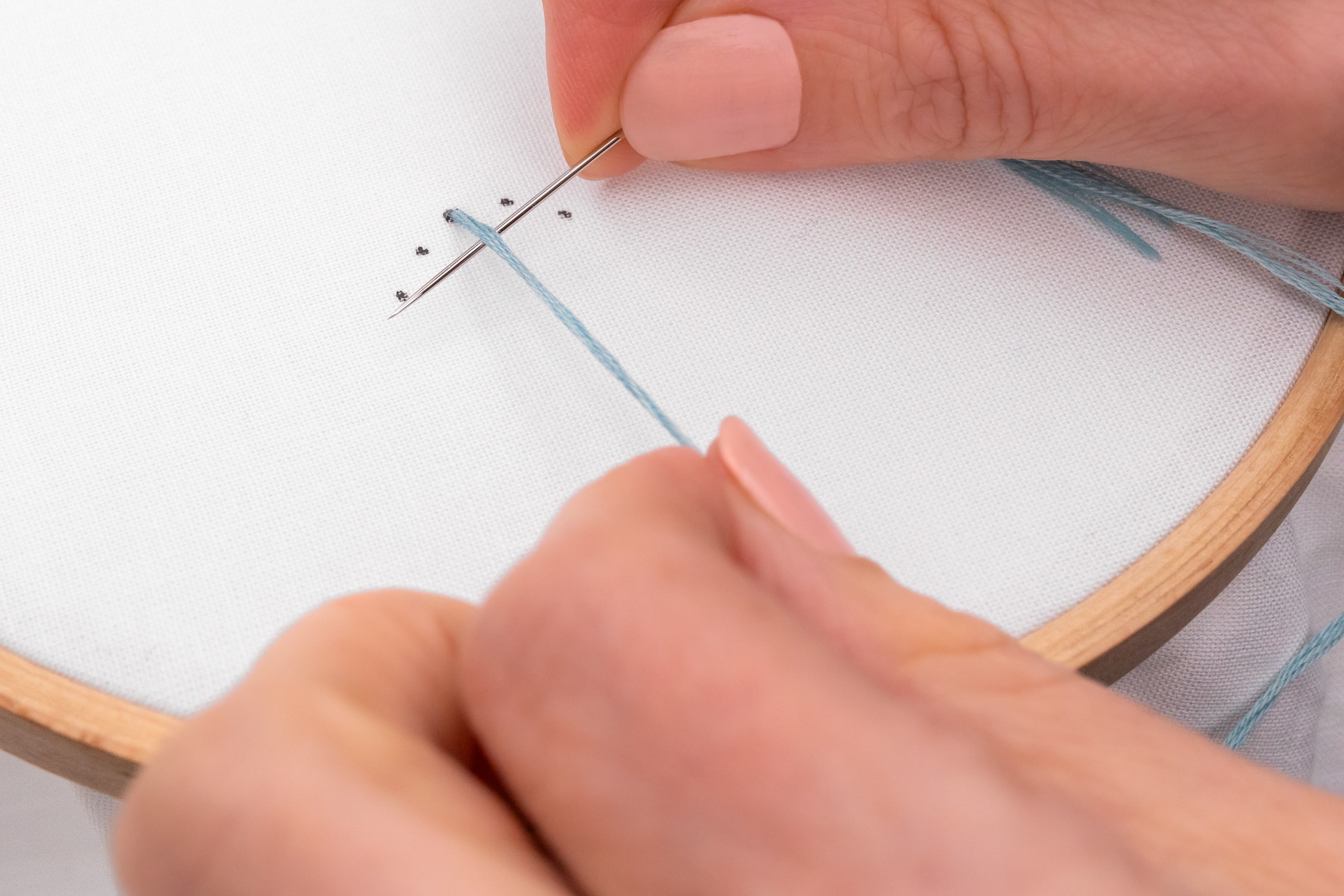
Step 3.
Now use your other hand to wrap the thread down and around the needle a couple of times. Make the wraps about one third of the way up from the needle’s point. After wrapping, keep holding the tension on the working thread with both hands. You’re doing great!
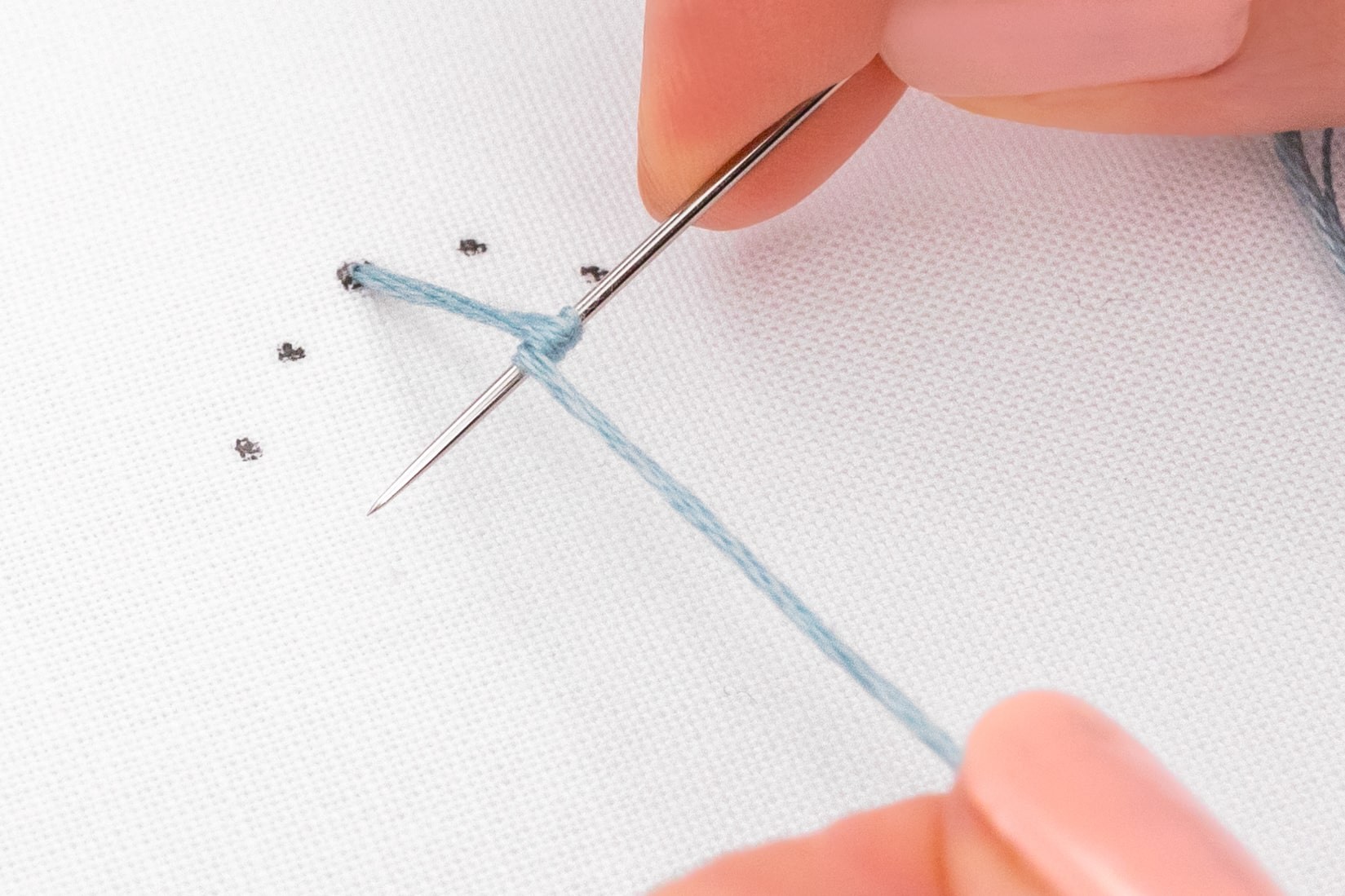
Step 4.
Keep maintaining the tension, move the needle back, and poke it down right beside where you first came up (make sure not to go into the same hole).
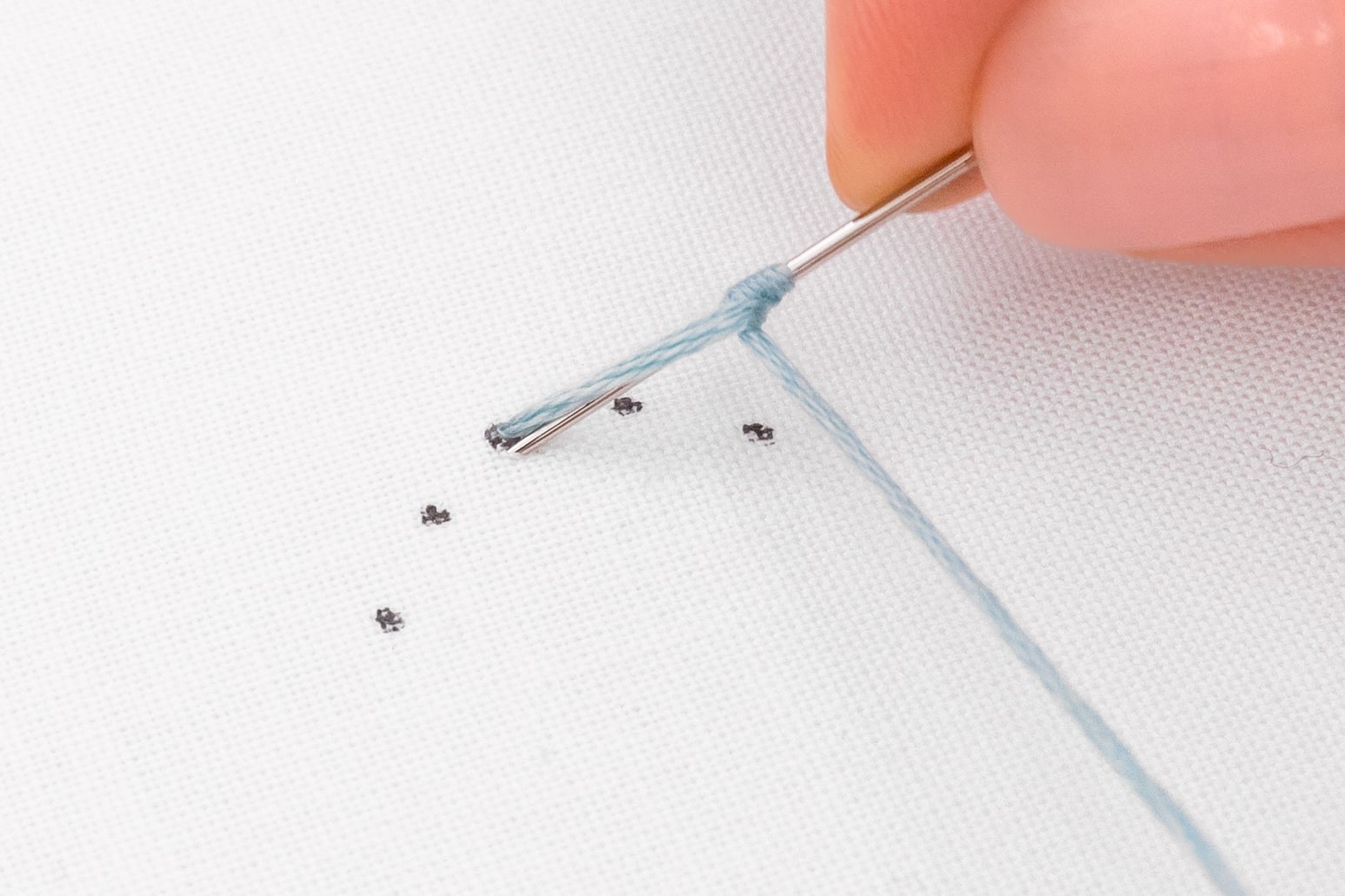
Step 5.
Push your needle about 1/3 of the way through, then gently pull on a bit more tension with your other hand. Watch as the wraps travel down the needle and sit on the fabric. That's what we want! Reposition your other hand to hold the hoop’s edge while still keeping tension on the working thread – it helps to press the thread against the fabric to hold it securely in place.
Step 6.
Now poke the needle most of the way through with your stitching hand, then reach it underneath to grab the needle. Slowly draw the needle fully through– you may need to give it some swivels at first, to help it pass through the fabric.
Then slowly pull all of the working thread to the underside. At first, hold some tension with your other hand -but don’t pull so tight that you’re ‘choking’ the needle and preventing it from passing through. This balance is something you’ll gauge with more practice, but keep at it!
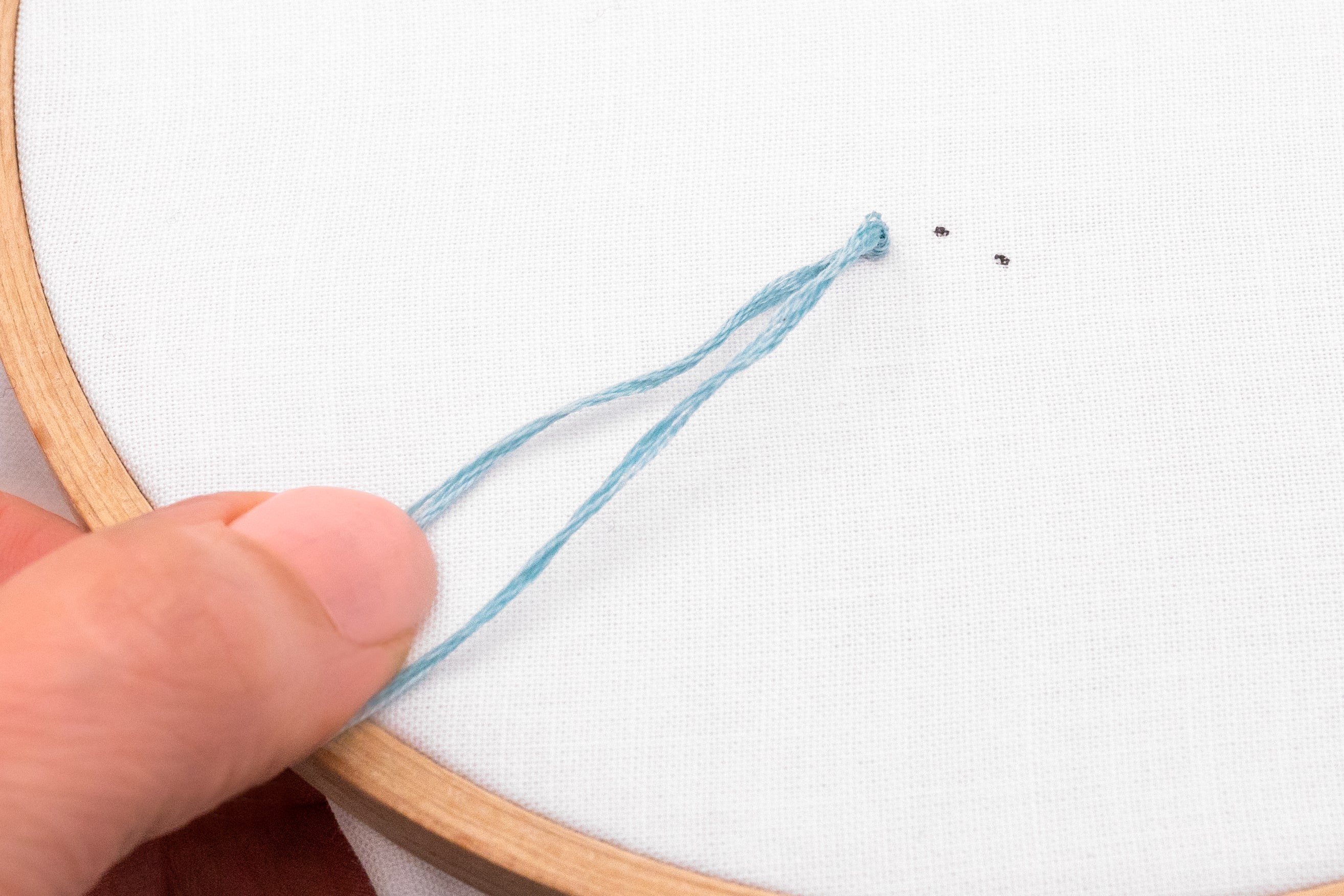
Let go with your other hand once things seem in control, and slowly draw through all of the thread.
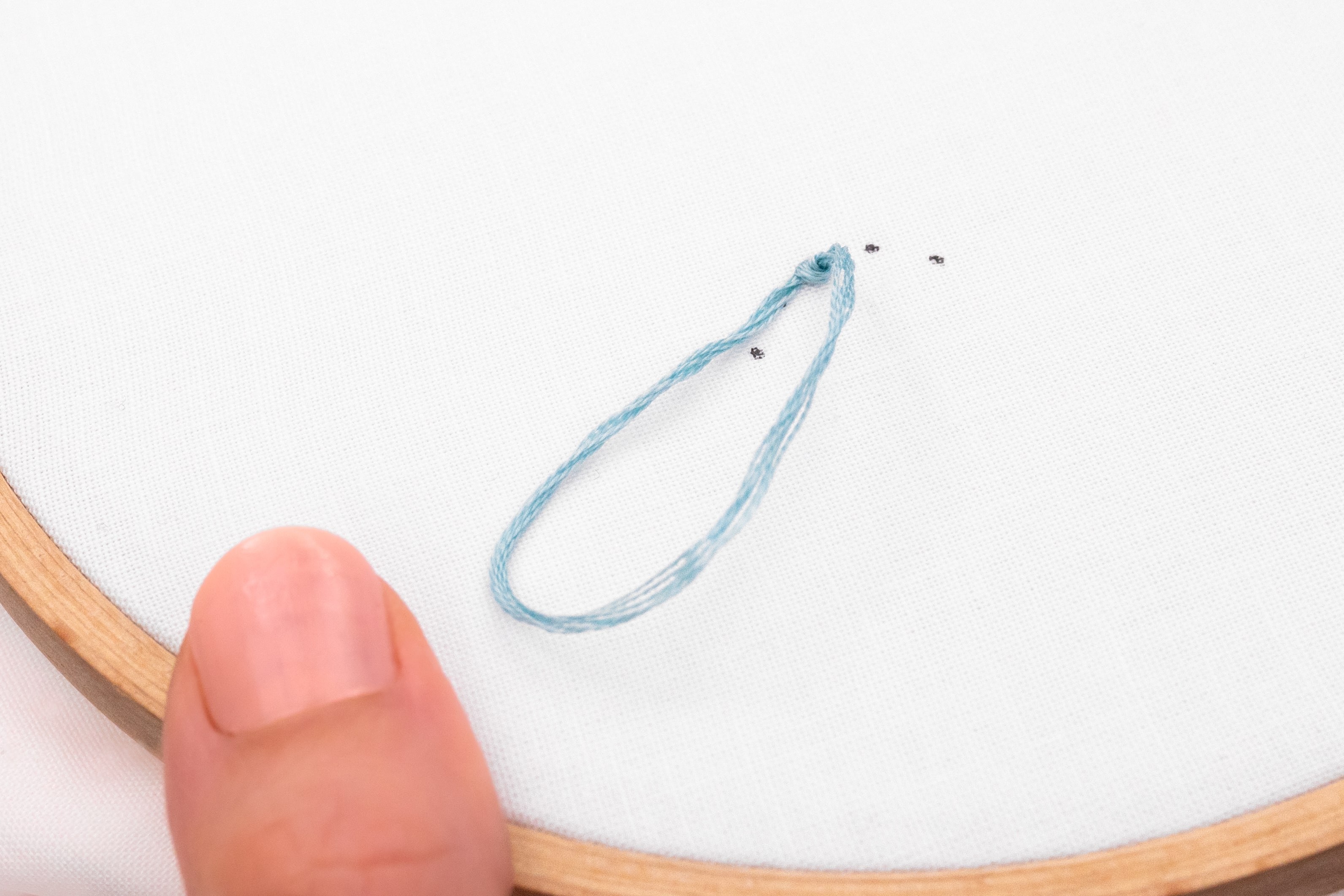
You should be left with an adorable French knot that’s sitting on the top of the fabric!



Step 7.
Then you can bring your needle up at the point to make your next knot. Continue creating knots on your fabric.
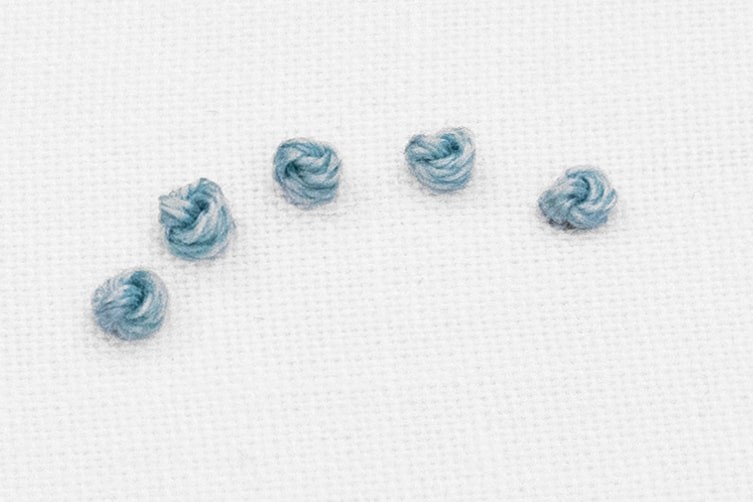
Step 8.
When you've finished stitching, secure and tidy away your thread.
French Knot Tips:
-
Cutting out tangles: If you get into a tangle once you’re deep into forming a French Knot, it’s very difficult to untangle your thread. So if that happens I recommend snipping off your thread and starting that knot again. The previous knots should hold in place ok.
-
Disappearing Knots: It’s important not to poke your needle back down into exactly the same hole that you came up from. This could cause your knot to pop through and disappear to the back of your fabric. Instead, poke your needle down a smidge beside where you first came up.
-
Tension is key: Tension is the key to forming a nice knot shape. If you pull too tight you might choke the needle (which makes it really hard to draw it to the underside). Or not enough can create knots which are loose and odd shapes. Rest assured this comes with practice, and as a beginner, you’ll create all sorts of odd knots. In fact this happens to very experienced stitchers too! So just focus on learning and enjoying the process.
-
Bubbles in your Knots: Go slow when forming the knot – if you whip your thread to the underside, you might lock things in place while some thread is still top-side, creating little bubbles of thread in your French Knots.
-
Placement: Let me tell you something - the knot will sit in between where your thread comes up and goes back down into the fabric. So depending on where you poke your needle down, you can control where the French Knot sits on your fabric. If you do the wraps at step 5 and don’t like the placement, you still have time to pull out your needle and try wrapping again in a new position. We’re not about ‘perfect’ placement here at Clever Poppy, but this tip might help.
-
How many Wraps? I like to keep it simple and work all of my knots with two wraps. But you can totally mix this up, and wrap once (for a finer effect) or three times (for a chunkier effect). You can try more than three wraps, but your knots may become a bit topply.
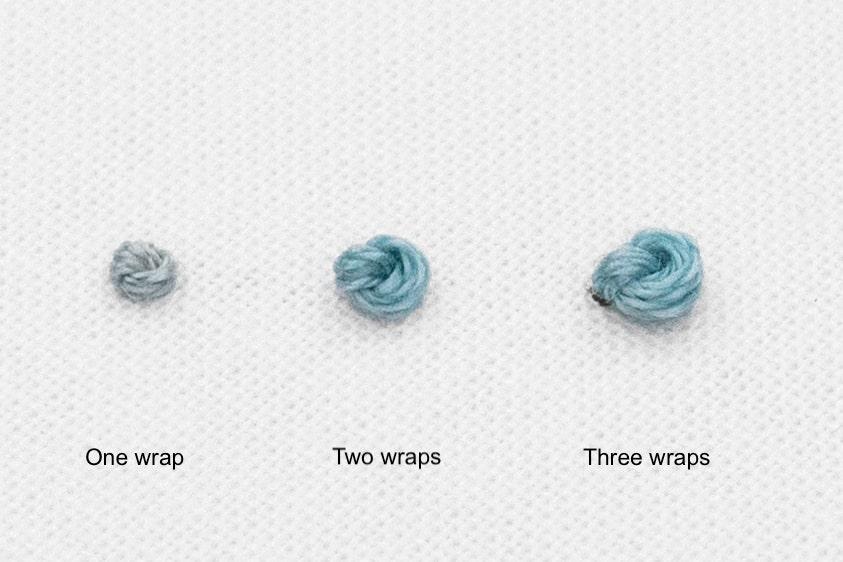
Video examples
And in this video, I’ve shared my tips for shading with French Knots.
Examples of French Knots in my patterns
Let's look at some examples of how you can use this awesome foundation stitch in your work!
First up, here's my Five Flowers pattern. See the French Knots are used in the beautiful flower centres, and as the entire flower shape with the hyacinths?
I've also used lots of French Knots in my Daisy Blooms pattern. See how they have two tones, and merge to create a lovely textured effect?
Last up, check out the French Knots in my pattern Winter Wonderland! I just love how they create a whimsical snowy effect.
Conclusion
I hope you feel so much more confident making perfectly round French Knots after reading this article. I know this stitch can be tricky, but the more you practice, the better you’ll get!
So there you have it, all my top tips and knowledge you need to make perfect French Knots. This stitch will be drawn upon again and again as you make more patterns along your embroidery journey, so it will hold you in good stead to nail these knots from the get-go. I’m so excited for you!
What's next?
Our beginner embroidery kits are a favourite among new stitchers for their simple, step-by-step instructions and beautiful designs that make learning easy and fun. Whether you’ve been wanting to learn embroidery or are just searching for your next creative hobby. These kits are the perfect introduction to embroidery.
Why people love our beginner kits:
-
Everything you need is included: fabric, thread, hoop, and more!
-
Clear instructions to guide you every step of the way.
-
Gorgeous designs you’ll be proud to display.
Our most popular beginner kits

